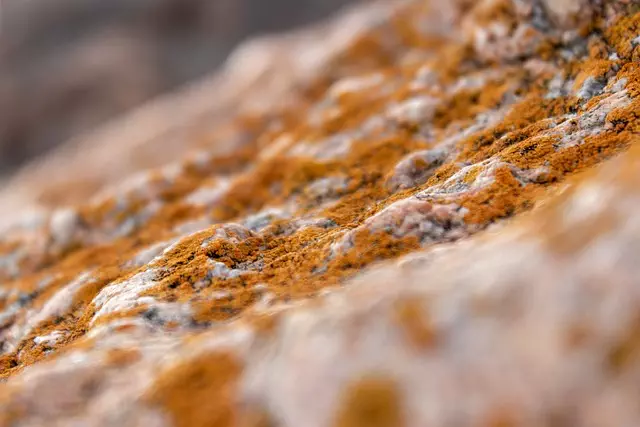Proper grout sealing in high-traffic areas like entryways, kitchens, and bathrooms is vital for maintaining a clean, aesthetically pleasing space. Unsealed grout attracts water, dirt, mold, and mildew, causing stains and discoloration over time. Grout sealing creates a non-porous surface to prevent liquid and solid particles from settling in, reducing the need for frequent cleaning and costly repairs. Choosing sealants designed for high-traffic areas safeguards tiles and grout from mold growth, prolongs their lifespan, and maintains their aesthetic appeal. Regular cleaning with mild, pH-neutral cleaners and prompt addressing of any mold or mildew issues are essential for keeping sealed grout and tiles in optimal condition.
Grout and tile sealing in high-traffic areas is an essential step towards maintaining a clean, safe, and aesthetically pleasing space. This article delves into the critical role of grout sealing as a defense against mold growth and staining—common issues plaguing heavily used surfaces. We’ll explore why this process is vital, the best practices for application, and maintenance tips to ensure long-lasting results. By understanding these factors, you can transform high-traffic areas, making them not just functional but also visually appealing.
Understanding the Importance of Grout and Tile Sealing in High-Traffic Areas

In high-traffic areas like entryways, kitchens, and bathrooms, grout and tile sealing are essential for maintaining a clean and aesthetically pleasing space. Grout, which fills the gaps between tiles, is particularly vulnerable to water, dirt, and mold accumulation due to its porous nature. Without proper sealing, these elements can infiltrate the grout, leading to unsightly stains, discoloration, and even the growth of mold. Over time, this not only compromises the appearance of the tiles but also poses health risks.
Grout sealing acts as a protective barrier against these issues. It creates a non-porous surface on the grout, preventing water and dirt from settling in. This simple yet effective step significantly reduces the need for frequent cleaning and costly repairs. By choosing grout sealing products specifically designed for high-traffic areas, homeowners and property managers can ensure their tile installations remain in top condition, enhancing the overall durability and beauty of these spaces.
Common Issues with Unsealed Grout and Tiles

Unsealed grout and tiles in high-traffic areas can lead to a host of issues, significantly impacting the aesthetics and longevity of your flooring. Without proper protection, these spaces become breeding grounds for mold and mildew, which not only mar the visual appeal but also pose health risks. The porous nature of grout allows liquid to seep in, leading to unsightly stains that can be challenging to remove, especially when left unchecked. Over time, this can cause the grout lines to discolor, appear uneven, or even weaken, potentially resulting in loose tiles and an unkempt floor surface.
Moreover, unsealed tiles are susceptible to damage from heavy foot traffic, causing them to chip, crack, or become roughened. This not only reduces their appeal but also creates an unsafe walking surface. Regular cleaning becomes a chore as dirt and grime embed themselves deeper into the grout and tile, requiring more aggressive cleaning methods that can accelerate wear and tear. Sealing these surfaces is a proactive measure to safeguard your investment, ensuring your high-traffic areas remain vibrant, clean, and safe for years to come.
The Role of Grout Sealing in Preventing Mold Growth

Grout sealing plays a crucial role in preventing mold growth, which is a significant concern in high-traffic areas. Porous grout materials can absorb moisture from various sources like spilled liquids or humidity in the air, creating an ideal environment for mold and mildew to flourish. By sealing the grout, a protective barrier is formed that blocks moisture penetration. This not only inhibits mold growth but also helps maintain the aesthetic appeal of tiled surfaces.
When it comes to grout sealing, choosing the right product is essential. Modern sealers are designed to repel water and stains, offering long-lasting protection. These sealants create an impenetrable layer on the grout, preventing any moisture or contaminants from seeping in. Regularly sealed grout ensures that even in heavily trafficked areas, mold and stains don’t stand a chance, keeping your spaces clean and healthy.
How Sealants Help Combat Staining in High-Use Zones

Sealants play a crucial role in maintaining the aesthetic and functional integrity of tiles and grout in high-traffic areas. They act as a protective barrier, preventing stains from penetrating the porous surfaces. In spaces subject to frequent use, such as commercial kitchens, bathrooms, or entryways, sealants are essential to guard against water, dirt, and grease infiltration.
By applying grout sealing products, you create an impenetrable layer that keeps out not just liquid but also solid particles, thereby reducing the likelihood of mold and mildew growth. This is especially important in humid environments where moisture can lead to unsightly stains and even structural damage over time. Sealants enhance the longevity of tiled surfaces, ensuring they remain vibrant and clean for longer periods with minimal upkeep.
Choosing the Right Sealer for Your Specific Needs

Choosing the right sealer is paramount for maintaining high-traffic areas. Consider factors like moisture levels, traffic intensity, and desired longevity when selecting a grout sealing product. For instance, commercial spaces with heavy footfall may require a more robust, water-repellent sealer capable of preventing persistent moisture from penetrating grout lines and causing mold or stains. In contrast, residential kitchens with moderate use could benefit from a simpler, cost-effective option focusing on stain resistance.
Researching different sealer types ensures you pick one tailored to your specific needs. Silicone sealers, for example, offer superior water resistance but may not be as effective against oil and grease stains. On the other hand, urethane sealers excel at repelling both moisture and stains, making them ideal for areas prone to spills or high humidity. Always read product labels and consult manufacturer guidelines to ensure optimal results when grout sealing to prevent mold and stains.
Application Techniques for Optimal Results

When applying grout sealing in high-traffic areas, it’s crucial to use the right techniques for optimal results. Start by thoroughly cleaning the grout and tiles to eliminate any dirt or debris that could compromise the adhesion of the sealant. This initial step is essential for achieving a long-lasting seal that protects against mold and stains.
Next, choose a grout sealing product specifically designed for high-traffic areas, as these formulations offer superior durability and resistance to moisture and wear. Apply the sealant evenly using a grout float or brush, ensuring complete coverage of all grout lines. Allow the sealant to dry according to the manufacturer’s instructions before reintroducing foot traffic, ensuring a seamless finish that not only enhances aesthetics but also provides practical protection for your tiled surfaces.
Maintenance Tips to Extend the Lifespan of Your Sealed Surfaces

Regular cleaning and maintenance are essential to keeping your sealed grout and tiles in top condition, especially in high-traffic areas. Start by developing a consistent cleaning routine using mild, pH-neutral cleaners to prevent damage to the sealer. Avoid harsh chemicals, abrasive scrubbers, or power washings, as these can strip away the protective seal. Instead, opt for a soft-bristled brush and a slightly damp cloth to gently wipe away dirt and grime.
Additionally, keep an eye out for any signs of mold or mildew growth, as sealed grout is less susceptible to these issues but not entirely immune. Addressing them promptly with suitable cleaning solutions will prevent further damage and ensure your surfaces remain stain-free. Regular inspections also allow you to identify any damaged tiles or grouts, which can be repaired or replaced before the problem escalates.
